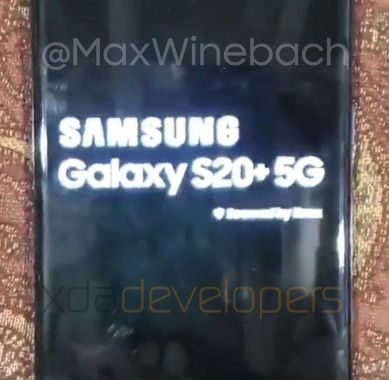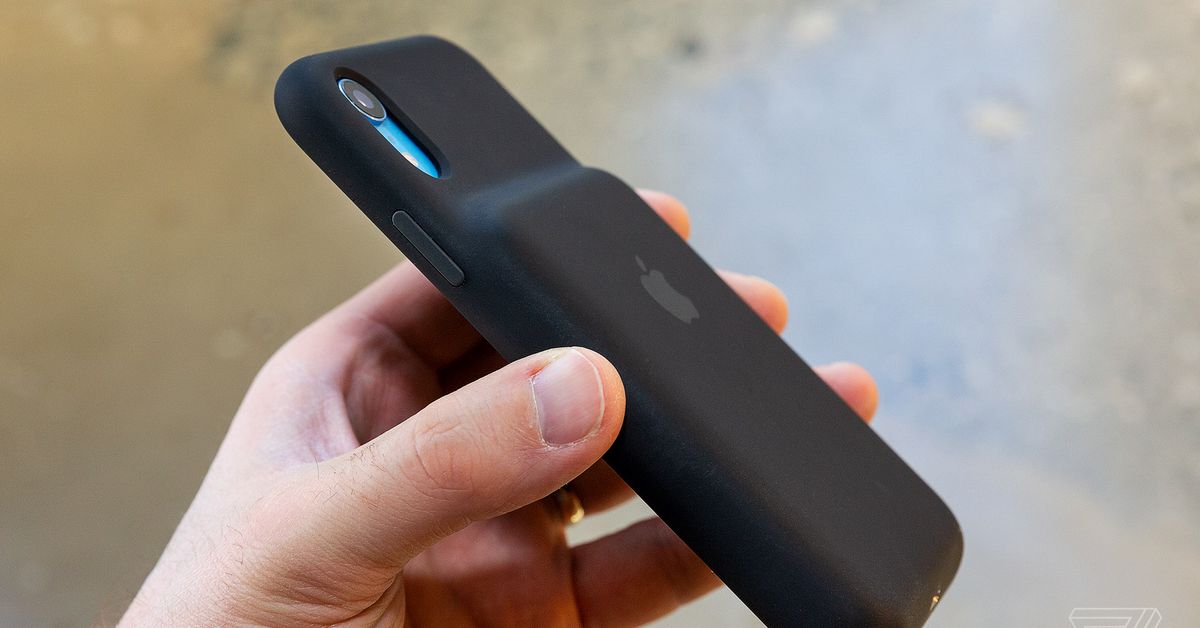
-
The Samsung Galaxy S20+ 5G. We're getting pretty wordy with these 5G phone names again.
-
When turned on, you can make out that smaller hole punch camera at the top.
-
The back, complete with the new rectangular camera array.
XDA Developer's Max Weinbach has scored the first in-person photos of Samsung's next flagship smartphone. We previously only saw the phone in renders, so there are a few things to go over.
Since the Galaxy S10 came out last year, we've been calling Samsung's next phone the "Galaxy S11" because we're great at math. But this year, it seems the S series is getting a new numbering scheme, and, according to the boot screen, this device is the "Galaxy S20+." With the S20 in 2020, apparently Samsung has decided to number these things like they're the latest installment in an EA Sports video game franchise.
The front is right in line with Samsung's last phone, the Galaxy Note 10, with a centered cutout for the front camera. XDA says the display sides are "much less curved than before. Our source said [the display] felt flat." Samsung has been pushing curved display sides for years, but the feature has never offered any usability benefits—it just distorts the sides of the screen and makes it easier to accidentally touch the sides of the display. Seeing a sensible return to flat displays would be great.The back shows off the expected larger, rectangular camera bump, and on this version the camera lens arrangement is a simple grid. The camera block has six spots, sporting four cameras, an LED flash, and a tiny hole in the bottom right that Weinbach says is a microphone hole.
The full name on the boot screen is the "Samsung Galaxy S20+ 5G." This is yet another confirmation that most flagship smartphones will have 5G in 2020. 5G is actually mandatory for devices with Qualcomm's new Snapdragon 865 SoC, so manufacturers (and consumers) don't really have a choice. The Snapdragon 865 with 5G requires more components than last year's Snapdragon 855 with 4G, so it would not surprise us to see phones that are more expensive and power-hungry. The dramatically faster form of 5G, mmWave 5G, probably isn't available in your area, either. The report mentions that there will be some 4G variants of the Galaxy S20, but those are most likely using Samsung's Exynos SoC and meant for international markets.The Galaxy S20+ is actually not the highest-end version of the Galaxy S20. There is expected to be an even higher-end version, called the "Galaxy S20 Ultra," which should feature even more cameras and might be even larger than the S20+.
The Galaxy S20 will be fully unveiled at Samsung's show on February 11, alongside a new, vertically folding smartphone.
Listing image by XDA Developers
https://news.google.com/__i/rss/rd/articles/CBMia2h0dHBzOi8vYXJzdGVjaG5pY2EuY29tL2dhZGdldHMvMjAyMC8wMS9zYW1zdW5ncy1uZXh0LWZsYWdzaGlwLXNtYXJ0cGhvbmUtdGhlLWdhbGF4eS1zMjAtZ2V0cy1waG90b2dyYXBoZWQv0gFxaHR0cHM6Ly9hcnN0ZWNobmljYS5jb20vZ2FkZ2V0cy8yMDIwLzAxL3NhbXN1bmdzLW5leHQtZmxhZ3NoaXAtc21hcnRwaG9uZS10aGUtZ2FsYXh5LXMyMC1nZXRzLXBob3RvZ3JhcGhlZC8_YW1wPTE?oc=5
2020-01-13 17:33:00Z
52780536625746










:no_upscale()/cdn.vox-cdn.com/uploads/chorus_asset/file/19593648/xcover_pro_sm_g715_002_back_black_scaled.jpg)